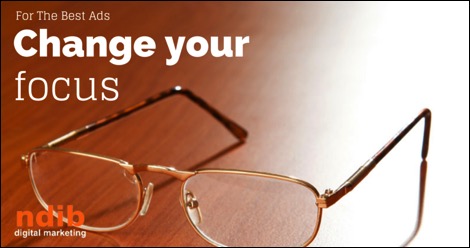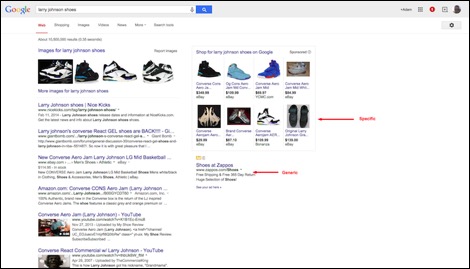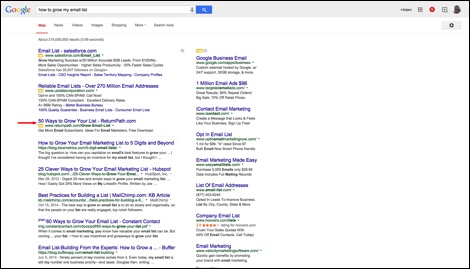
You have been in business for over a decade.
Potential customers respect that kind of longevity and will want to use that knowledge to decide whether to click your ad.
So you open up your AdWords account and create some ads based around your businesses longevity, how reliable your business is, and how your business can be trusted. You launch these ads and you wait…
And continue waiting as your click through rate and quality score begin to deflate like a Patriots playoff football. You can’t figure out why these users won’t click. You check the spelling, the targeting, your keywords and they all make sense – so what is up?
Why is it that your business, which is trustworthy and reliable, is getting such a whooping in AdWords? Why do people not seem to care about the very things that you are most proud of for your business?
Your AdWords account has a common flaw that I see over and over again with new and old advertisers alike. It doesn’t have to do with any of your settings, or the technology of AdWords, it has to do with focus.
You Focus Your Ads On Your Business
You know your business better than anyone else, and as a business owner there are accomplishments that you are proud of and that are important to you. You may have been in business for over a decade, have loads of repeat customers, and provide a quality service. Congratulations – you should be proud as these are excellent accomplishments, but that doesn’t mean that you should necessarily include them in your ad.
Here is why you should not focus your ad on these accomplishments: while these accomplishments are important to you, they are focused on you and your business rather than the customer. A customer doesn’t care about how long you have been in business, they care about what benefits them.
When a customer is searching they aren’t focused on or looking for your business. Searchers are focused on themselves and more specifically their problem (obviously, this excludes branded search queries). When a searcher is focused on themselves and you tell them something that doesn’t directly benefit them in that moment, you have a message mismatch. This particular message mismatch causes many a missed click.
Solution: Make The User/Potential Customer The Focus Of Your Ads (And Your Whole Strategy)
When a potential customer walks into your physical store, you immediately focus on the customer and go out of your way to understand their problem. In fact, many times the first thing a salesperson says to a customer is: “How may I help you?”. This puts the focus on the customer, which is the way efficient businesses make a profit. As you understand more about this potential customer you maintain your focus on the customer and tailor your message to their specific need. You find out: Are they looking to make a purchase? Are they just looking for information? You provide them with what they need, and in turn create a satisfied customer or lead.
Focusing on the customer is a basic business principle that we all use in the physical business world, yet for some reason it is not often translated into the digital world. To make your ads more successful, use this principle to shift the focus and of your ads from boasting about your business to understanding and focusing on how you can help the potential customer. A customer centric AdWords campaign will be rewarded with more clicks, a higher quality score, and a lower cost per click.
How to Focus Your Ad On the Customer
1. Learn What Your Potential Customer Wants
The first step is to listen to your customer. This thought is similar to the earlier example of the physical store, where a salesperson asks a potential customer, “how man I help you?” to discover what they are actually looking for. In the digital world finding out how you can help a potential customer is even easier than the real world because you don’t even have to ask. The potential customer simply tells you directly how you can help them via their search query.
Your potential customer types in exactly what they are looking for. It is your job to focus on what the customer is asking for rather than what you want to tell them. In other words – listen to your customer. Review both your keywords and your search query report to see the exact search queries that your potential customers use to trigger your ad. Then take these queries and map your best offer to what they are actually looking for. Is it a product? Is it more information? If you don’t have an offer that is even close to what the customer indicates they want via their search query than this is a message mismatch. You want to either add the search query as a negative keyword or create an offer that makes sense for it.
2. Focus On What The Customer Actually Wants and Inform The User As Specifically As Possible
This simply means that your ad indicates that what you provide is as close a match as possible to what the user is looking for. For example if your potential customer searches for Larry Johnson Converse shoes – this is a very specific (and awesome) item. So you would want your ad to show you listen and state that you have these Larry Johnson Converse shoes in stock (or per the image a PLA that shows the actual shoes), rather than a generic ad for shoes like Zappos which focuses on Zappos rather than the customer.

Based on your research from step one you know that your potential customers are not always looking is not always an item either. Depending on their search query, your potential customers may be in an earlier stage in the buying funnel and looking for more information and are not ready to make a purchase. As an example if they were to search “How to grow my email list” they are looking for information rather than a service. In this example you can see that the ad for returnpath.com is the most specific and focused on the potential customer and answering what they are actually looking for.

3. Focus On Your Potential Customer’s Objections
Internet users are a cagey bunch – we are tired of being tricked, having spyware installed, and we make sure to keep our guard up. For these reasons it is important to remove any friction that may keep a user from clicking. For example, it may seem you have exactly what the user wants but what if the product comes and it isn’t what they ordered? Do they have to pay for shipping? Can they return it? Focus on that potential customer and overcome their objections. Generally, the more you can reduce the friction the better your click through rate will be.
Moz does a good job of this by focusing the ad on the user and telling them that it is a Free Trial and that the setup will be easy. They also do a good job of focusing on the customer by using the word your.

You now know how to focus your ads on your customers, why it is important to focus your ads on your customer, and how to implement it. You may not be able to focus all of your ads on the customer, but focusing your marketing messages as much as possible on the customer is a best practice.
What are some of the best ways that you have found to focus your ads on your customers?
Image Credits:
Main Image created by author via Canva
All other images screenshots courtesy of author



